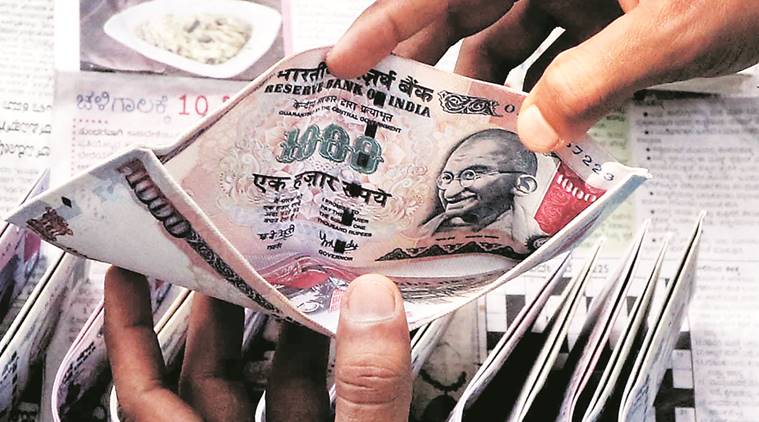
Santosh Kumar Mohapatra
The slugfest over the efficacy of demonetisation has ended with RBI’s annual report 2017-18 proving that demonetisation was a farce. While announcing demonetisation, the prime minister had promised the nation that with the move, problems of black money, fake currency and terror financing would end, but the RBI report established that it completely failed on all three counts.
The government had hoped that notes for Rs 3 lakh crore to Rs 4 lakh crore would not be exchanged and that the sum could be transferred to the RBI. The finance minister said: “Obviously people who have used cash for criminal purposes are not foolhardy enough to try and risk and bring the cash back into the system, because questions will be asked.”
But the RBI’s annual report shows that notes for Rs 15.310 lakh crore, that is, over 99.3 per cent of banned notes of Rs 15.417 lakh crore, have returned to banks. It shows that even those who had held black money in cash deposited holdings in banks and got away with it. The logical conclusion is that all the black money has been legitimised.
The decline of India’s position in global corruption perception index from 79 in 2016 to 81 in 2017; rise of bank NPAs by Rs 6.2 lakh crore under the NDA according to parliamentary committee; Rs 77,000 crore bank loan fraud taking place under the present government, with Rs 20,000 crore in the last year alone; and the rise in transfer of black money to Swiss banks corroborate that demonetisation neither curbed black money nor reduced corruption.
If there is discernible rise in the number of taxpayers or widening of tax base, why is the government not reducing taxes on petroleum products, which was hiked when international prices were low?
As far as curbing terror financing is concerned, escalating violence speaks for itself. Demonetisation has also failed to curb counterfeit notes. Compared with the previous year, counterfeiting of hundred-rupee notes has risen by 35 per cent, while there was a noticeable increase of 154.3 per cent in counterfeiting of fifty-rupee notes. Counterfeit five-hundred– and two-thousand–rupee notes detected during 2017–18 were 9,892 and 17,929 respectively, against 199 and 638 respectively the previous fiscal.
After failing to achieve its stated objectives, the government has shamelessly changed the narrative behind demonetisation and had talked first of “cashless economy” then of “less cash economy”.
But the currency in circulation as of March 31, 2018, stood at Rs 18.29 lakh crore, which amounted to 101.8 per cent of the pre-demonetisation level, that is, Rs 17.97 lakh crore on November 4, 2016.
As the economy grows, currency in circulation is bound to grow. Hence, we need to look at currency in circulation as a proportion of the GDP. As of March 31, 2016, the currency in circulation stood at 12.1 per cent of the GDP; it declined to 8.8 per cent of the GDP as of March 31, 2017, owing to demonetisation; again, it rose to 10.9 per cent of the GDP as of March 2018, indicating the rise in cash economy. As the currency in circulation as a proportion of GDP is growing more than GDP, it should reach its earlier level of 11.5-12 per cent of the GDP in a year or two.
The provisional data of the RBI on gross financial savings for 2017-18 reveals people are increasingly keeping their surplus income in cash. Data reveal that a year after demonetisation, the percentage of savings in currency spiked to seven-year high of 2.8 per cent of the gross national disposable income (GNDI) in 2017-18 as against 1 per cent of the GNDI in 2014-15 and 1.4 per cent in 2015-16. In 2016-17, when high-value currency was demonetised, cash savings fell to -2 per cent of GNDI as much of the currency moved into banks as deposits.
The finance minister said the larger purpose of demonetisation was to make India tax compliant and it led to formalisation of the economy, increased tax base, tax collection and led to higher growth. First, the growth rate declined by 1.5 per cent owing to demonetisation, which translated to loss of Rs 2.25 lakh crore a year. If there is discernible rise in the number of taxpayers or widening of tax base, why is the government not reducing taxes on petroleum products, which was hiked when international prices were low? Further, why is the government generating revenue by divestment?
However, formalisation of the economy or the widening of tax base did not warrant demonetisation. Had demonetisation been planned and slow, people would not have faced any hardship. Countries with twice the tax–GDP ratio as that of India have never demonetised currency. Efficiency of tax administration and the ability of governments to tax the rich at higher rate matter the most.
Demonetisation appears to be the spoiler-in-chief of RBI’s profits. The money RBI spent on printing the new 500- and 2000-rupee notes in 2016-17 and 2017-18 is Rs 12,877 crore compared with only Rs 3,421 crore a year before demonetisation, that is, in 2015-16 (July to June cycle). The dividend RBI paid the government was Rs 65,000 crore in 2015-16. This fell by more than half to Rs 30,659 crore in 2016-17 when demonetisation was implemented. It went up again in 2017-18 (that is, about Rs 50,000 crore) but has not touched the 2015-16 mark.
The question is whether note ban was worth the pain and hardship caused to public. It was not an economic measure but a demon that crushed common people and small businesses by causing a liquidity crunch, disrupting supply chains and dampening demand. Over 100 lives were lost. Fifteen crore daily wage workers lost their livelihood for several weeks. Thousands of SME units were closed and lakhs of jobs were destroyed. India’s overall employment rate declined from 8.46 per cent in September 2016 to 3.89 per cent in July 2017.
The author is an Odisha-based economist. e-Mail: skmohapatra67@gmail.com
